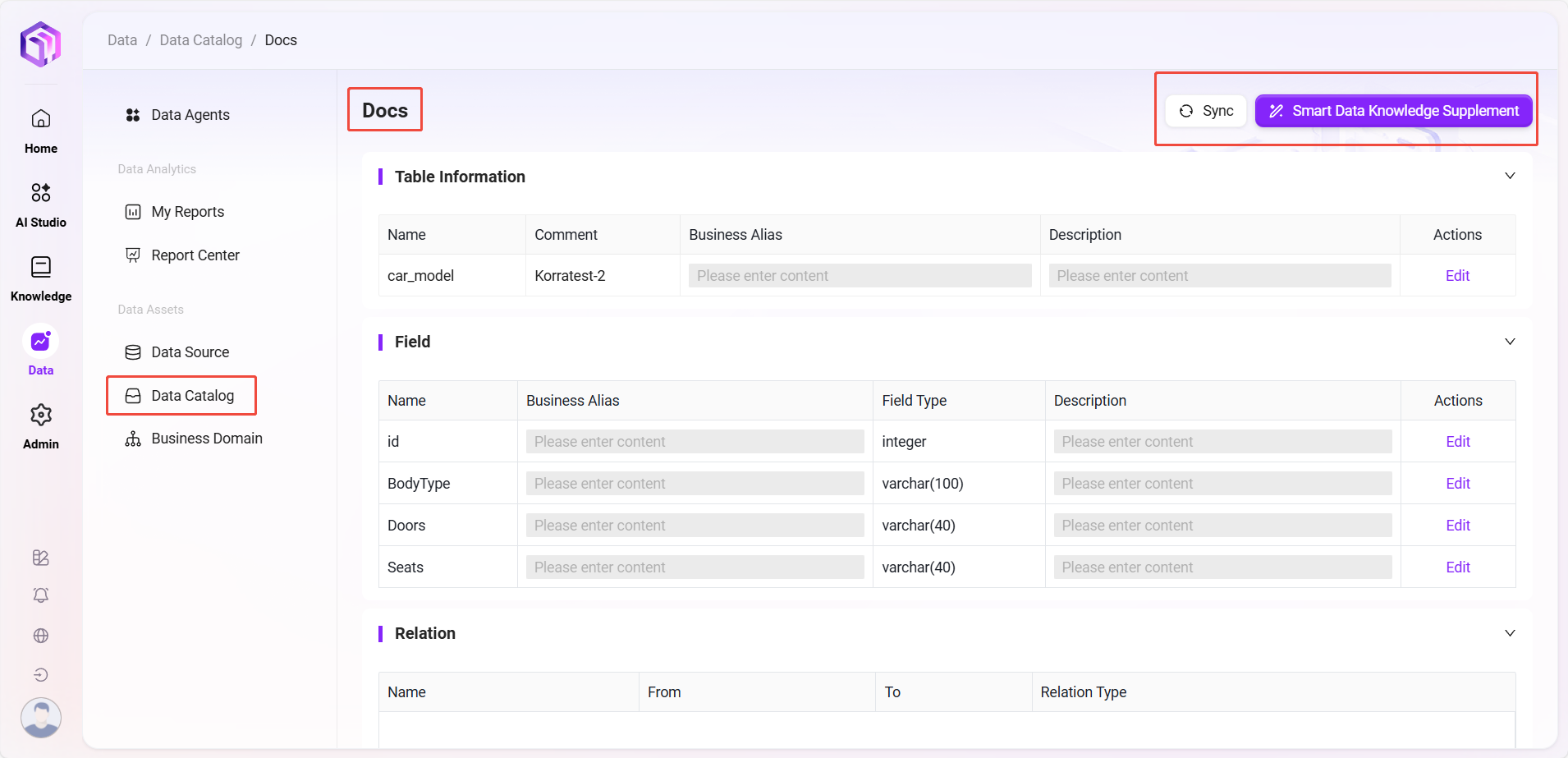Data Catalog
Synchronize Data Tables and Views
After connecting to a data source, users can view and manage synchronized tables in the "Data Catalog" module.
- Only selected tables in the data source are displayed;
- Supports viewing each table's table name, business description, field name, and field description;
- Shows the relationships between this table and other tables, including related tables, related fields, and relationship types (such as primary/foreign key);
- Supports one-click "Intelligent Data Knowledge Supplement", where the system automatically generates business aliases and descriptions for tables and fields based on AI and Schema;
- Supports the "Data Table Synchronization" feature, allowing users to reload updated table structures.


Data Catalog Synchronization Notes
-
Unsynchronized tables or views cannot be used
- Only tables and views synchronized in the data catalog can be referenced or used to build business domains in the SERVICEME Data module.
- If new data exists in the database but is not synchronized in the data catalog, the system will not be able to recognize or use it.
-
Database structure updates require re-synchronization
- When table structures or field information in the external database change (such as adding fields, adjusting field types, renaming tables, etc.),
- Users need to perform the "Synchronize" operation in the data catalog to ensure the data structure remains consistent with the source system.
- Otherwise, data within SERVICEME will continue to operate based on the old version structure, which may lead to subsequent data mapping errors or missing fields.
-
Common causes and troubleshooting for synchronization failures
- Data source connection failure: This may be caused by changes to the data source password, database service interruptions, or network issues. Please retest the connection in "Data Source Management".
- Insufficient table permissions: Some database accounts only have read-only permissions or lack metadata access permissions. Please contact the database administrator to grant the necessary permissions.
- Special characters in field or table names: In some databases, field or table names may contain spaces, symbols, or reserved words. It is recommended to rename them in the database or exclude them before synchronization.
- Schema mismatch: When database structures change frequently or multiple Schemas are used, it is recommended to confirm the Schema configuration before synchronization.
tip
- It is recommended that Data administrators regularly check the synchronization status of the data catalog, especially in scenarios where the database is frequently updated or business table structures change often.
- By keeping the data catalog up to date, you can ensure that the AI Agent, BI reports, and intelligent analysis modules continuously receive accurate and available data support.